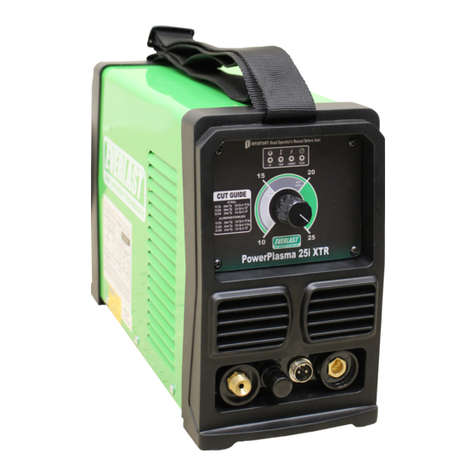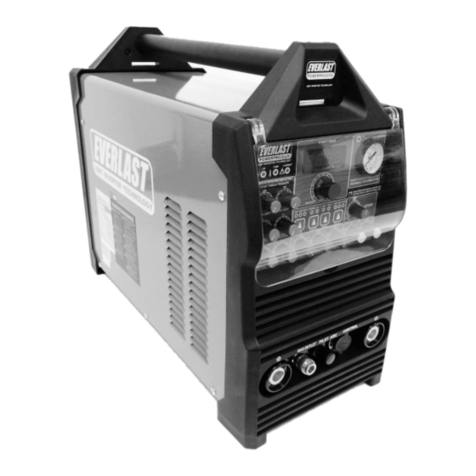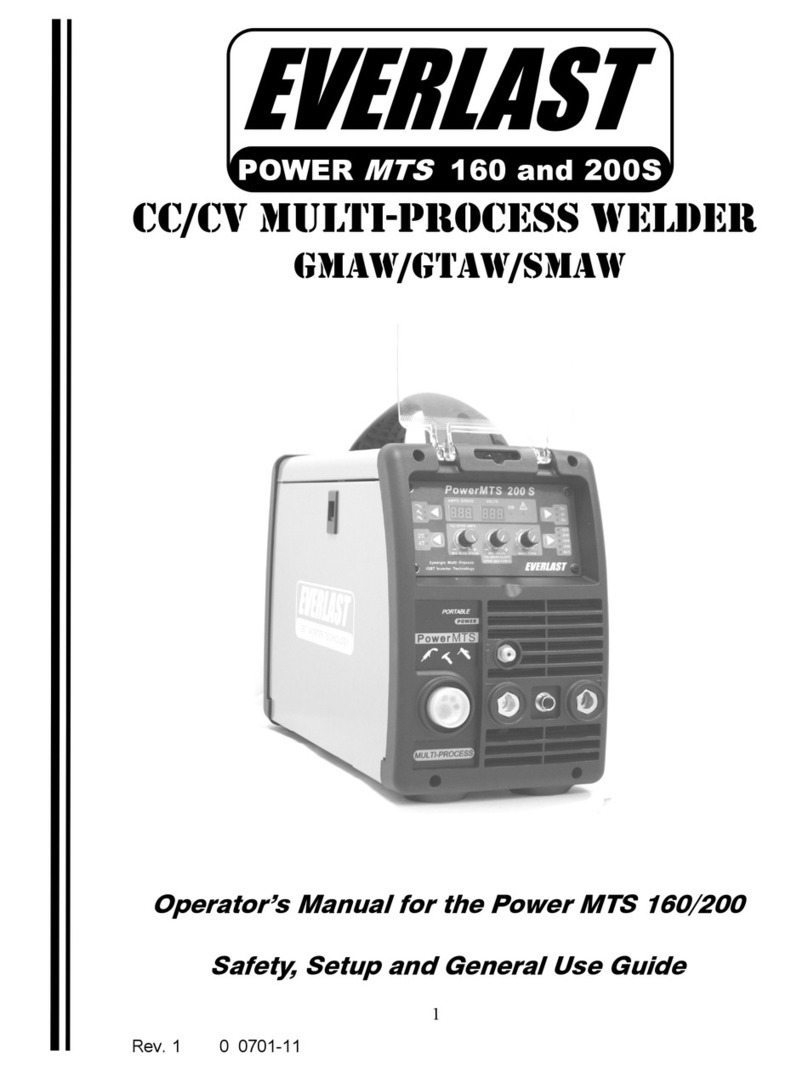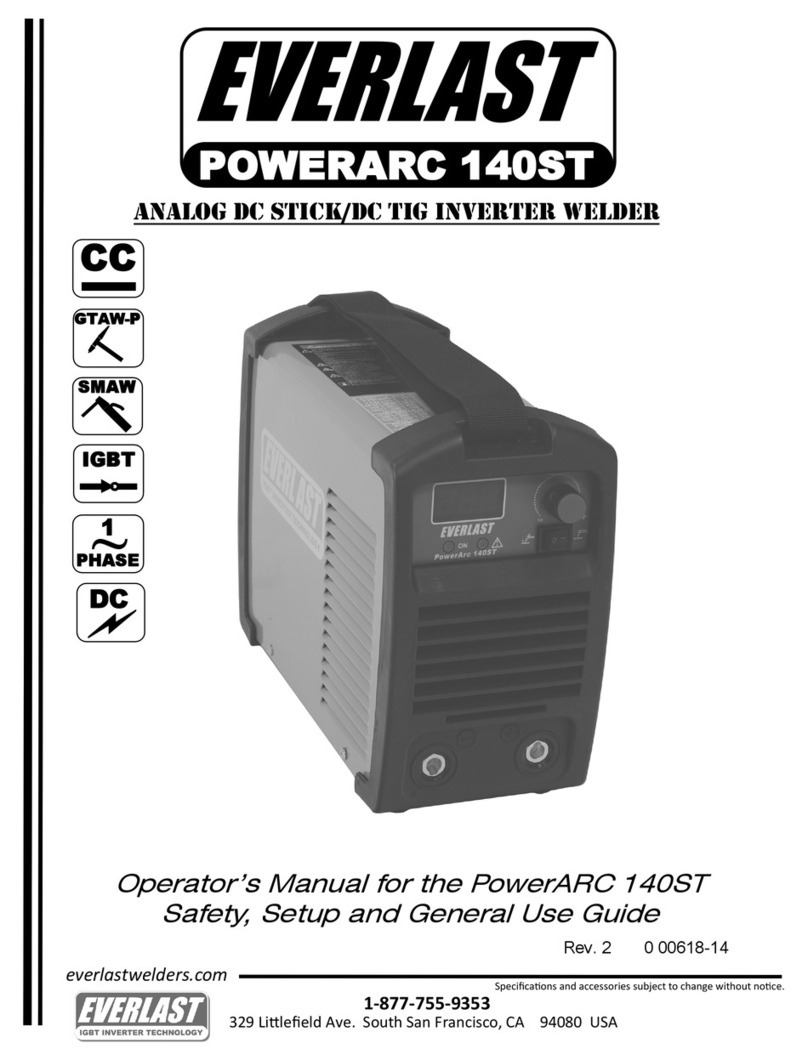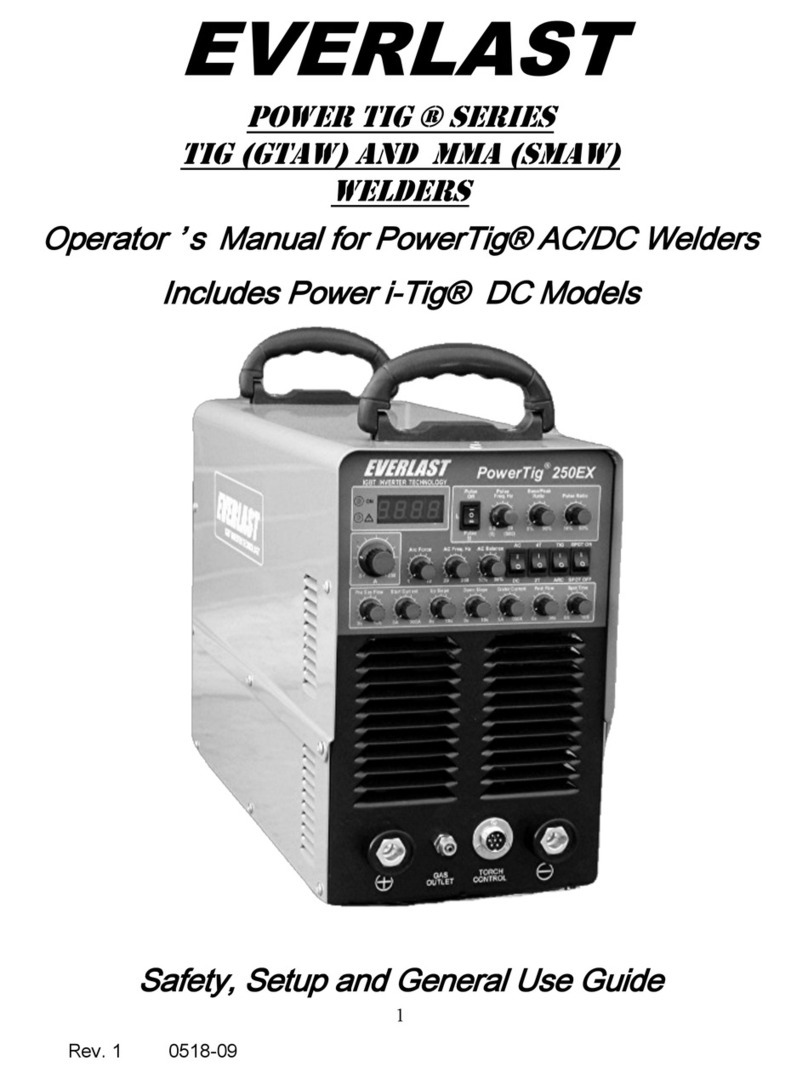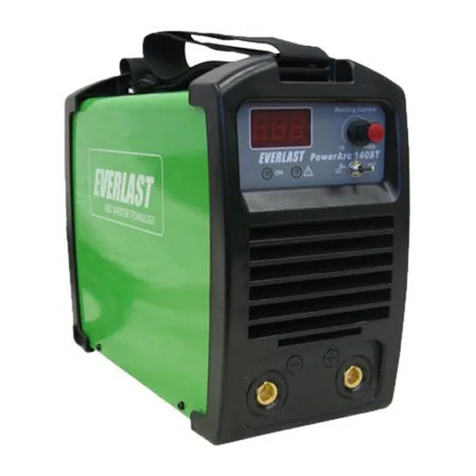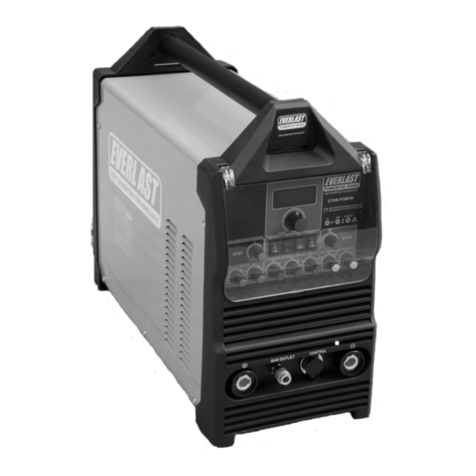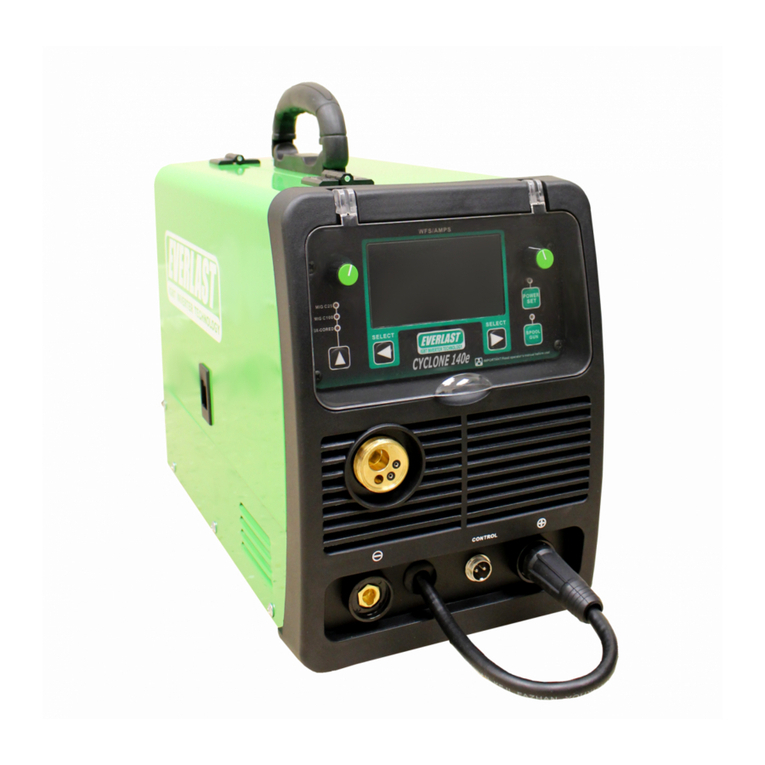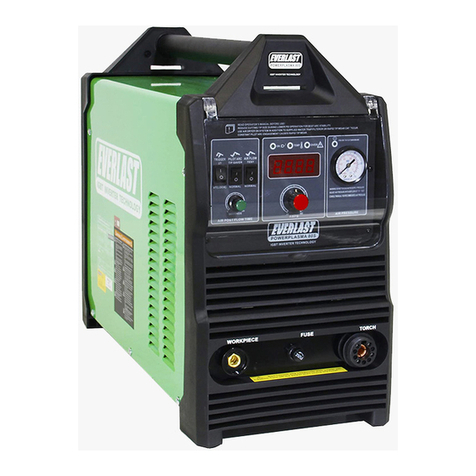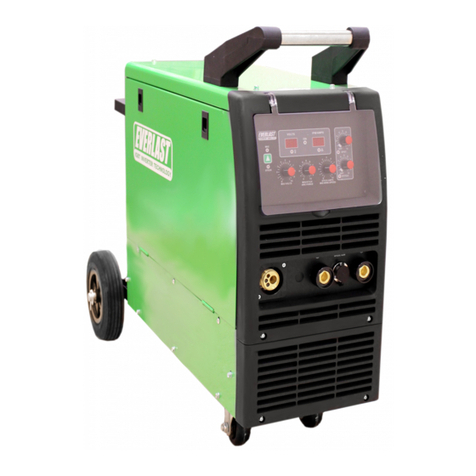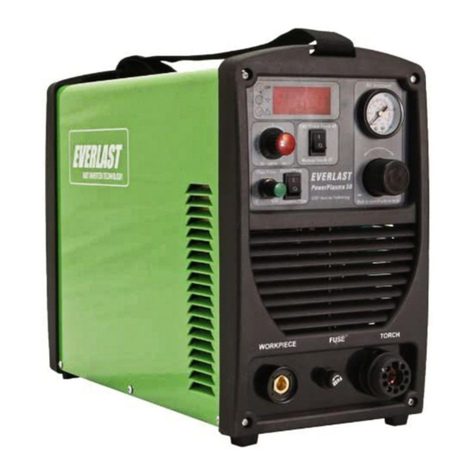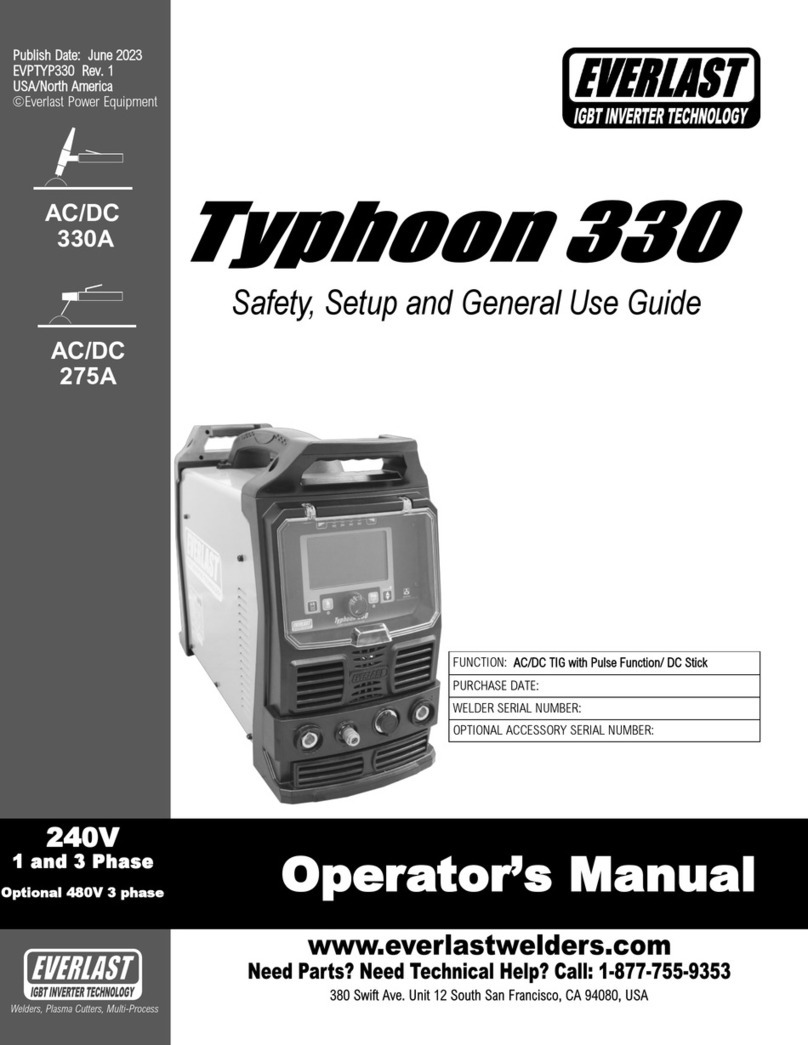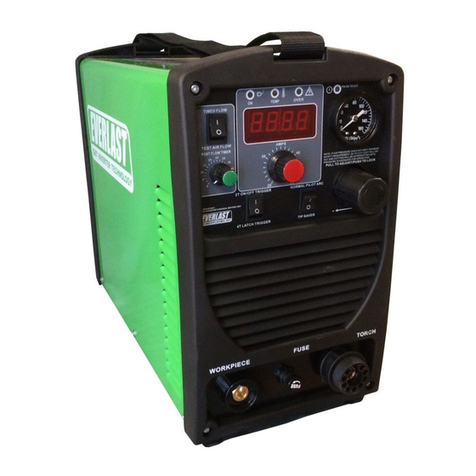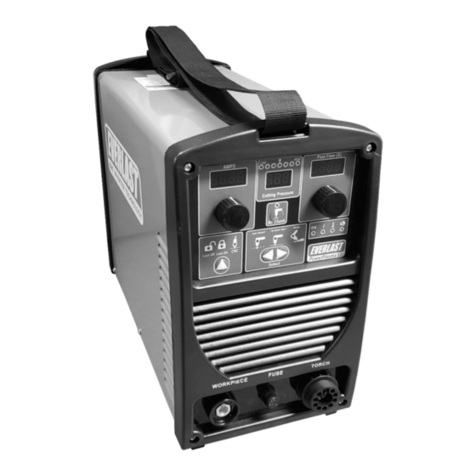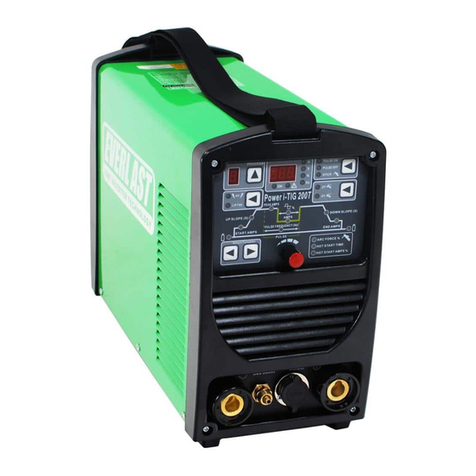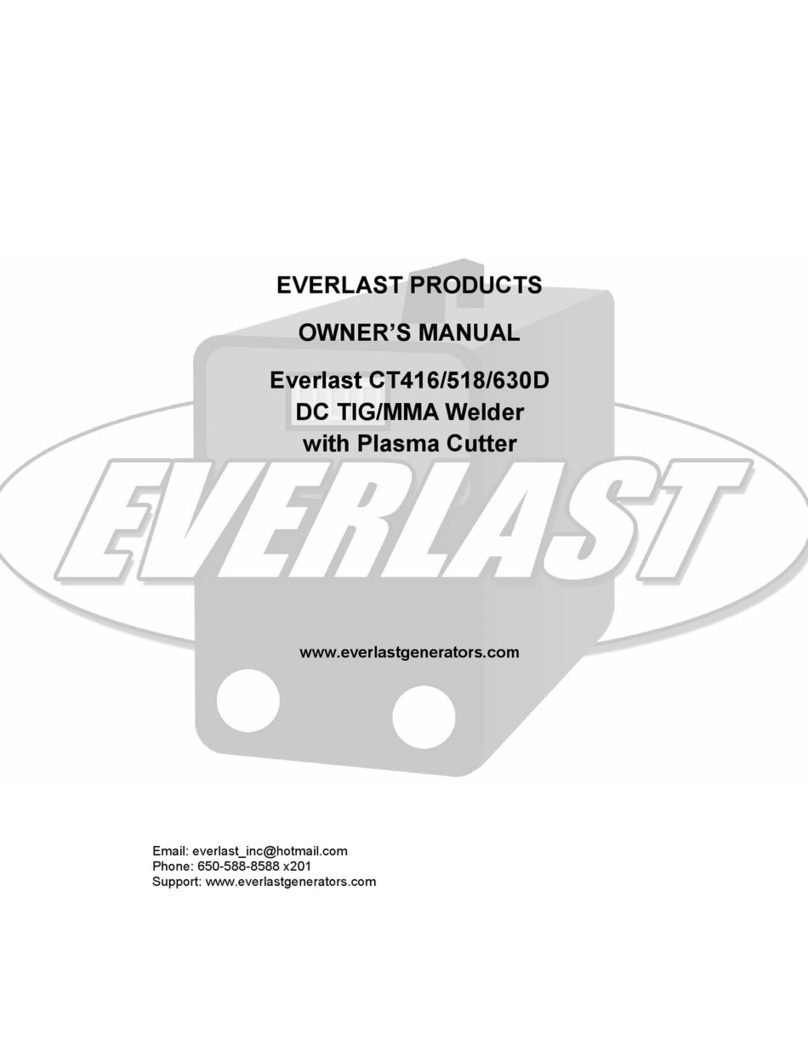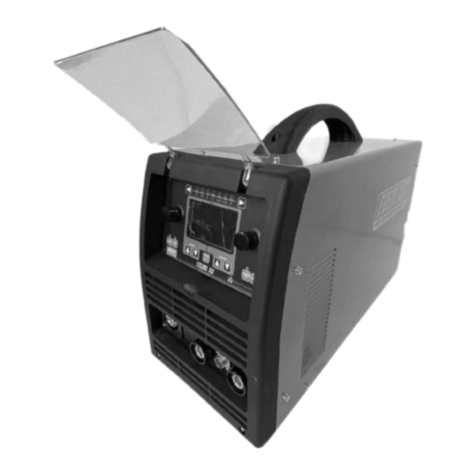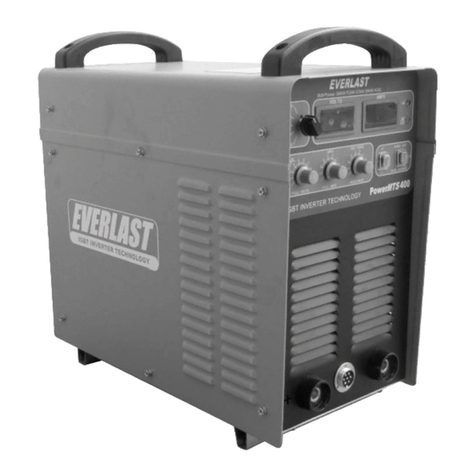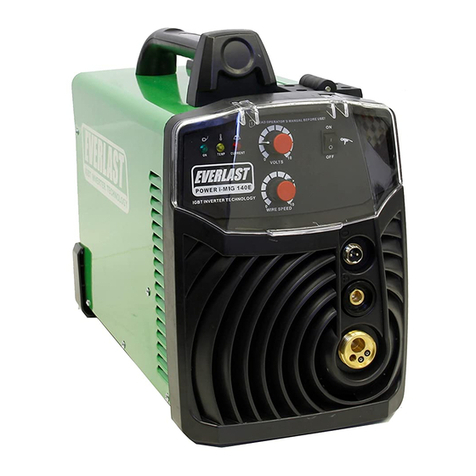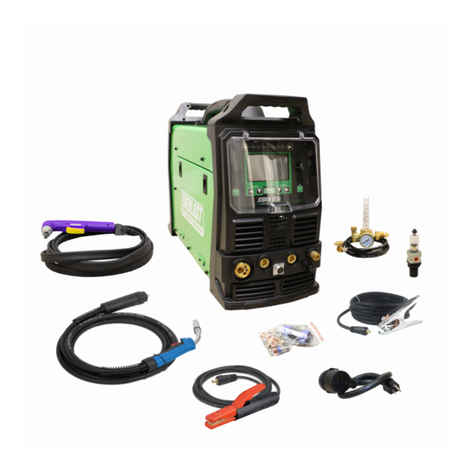10
Section 1 Introduction and Specifications
NOTICE:
When evaluating a plasma cutter for daily service, do not consider maximum severance cut values as criteria for routine use. These maximum specications are intended for occasional
situations that might require such a cut. Plan the unit’s daily use around the recommended average cut thickness for best results and speed. This is an industry standard recommenda-
tion and is not unique to Everlast PowerPlasma models. CNC cut thickness recommendations are further reduced by duty cycle, travel speed expectations, and straight-down piercing
limitations. Everlast’s performance specications are based on reasonable environmental conditions with well maintained units, and cutting with new consumables using optimum air
pressure. Actual performance results may vary in the eld due to variable conditions, power supply, air pressure, air quality, consumable wear etc.
Use the I1MAX value to size the breaker. Use the I1EFF current to size wiring. Consult the NEC Article 630 for details concerning wiring and breaker requirements.
PowerPlasma 62i Specications
Inverter Type Digital IGBT
Minimum/Maximum Rated Output 20A/88V - 60A/108V
Start Type Blow-Back Type
Torch Type iPT60 12 ft.
Duty Cycle @ Rated Amps/Volts ( 40° C) (Output V/A) 60% @ 60A/ 104V 100% @ 50A/ 100V
OCV (U0) 240 V
Voltage Input (U1) 50/60Hz 1 Phase (±10%)
Maximum Inrush Amps (I1MAX) 41A
Maximum Rated Effective Amps (I1EFF) 32.4A
CNC Port/ CNC Capable Yes (Order CNC package to receive plug for port, or order plug separately)
Air Post Flow Timer Adjustable, 0-50 Seconds
Air Compressor Requirement and Recommendations. 4.5 - 5 CFM @ 90 PSI (127-142 lpm @ 6.2 bar)
Use a compressor with a minimum output of 5.3 CFM @ 90PSI (150lpm @ 6.2 bar), with
30 gallon (114 Liter) capacity or higher recommended for best operation. Pancake type
and small oil-less compressors are not suitable.
Duty Cycle/ Over Current Protection Yes, Self-diagnosing feature. (See code references at the end of this manual.)
Minimum Operating Air Pressure Approximately 43 PSI (2.7 bar) (safety cut-out threshold)
Use pressure indicated by target LED color. Varies by process.
(Set and check air-pressure with “Air-Check” engaged)
Low/High Pressure indicated by Error Code E03.
Maximum Supplied Air Pressure 90 psi (This is incoming pressure from the air compressor, not operating, or (From Com-
pressor/Tank) cutting pressure.) The air compressor MUST have a separate pressure regu-
lator at the tank or inline to control maximum supply pressure.
Recommended Maximum Daily Average Cut Thickness
(Steel, Hand Cut) 5/8” (15.8mm) Decrease 35-40% for Aluminum and Stainless (INOX).
Recommended Maximum Daily Average Cut Thickness
(Steel, CNC, Auto-Cutting Mechanisms) 3/8” (9.5mm) Note: CNC operation has limiting factors that reduces operation Average Cut
Thickness capability. This includes duty cycle, inability to manipulate torch for piercing
duties, cut speed requirements/expectations.
Rated Maximum Quality Cut @ 10-12 IPM (@ 250-300mm / min)
(Steel, Hand Cut) 1” (25mm) Decrease 35-40% for Aluminum and Stainless (INOX).
Max Severance Cut @ 3 IPM (75mm / min) (Steel, Hand Cut ) 1 1/4” (31mm) Decrease 35-40% for Aluminum and Stainless Steel (INOX).
Gouging Limit (approximate gouge depth/width) 1/8”x 3/16” (3mm x 4.5mm)
Minimum Water Ingress Protection Standard IP21S
Efciency >85%
Cooling Method Full time High Velocity Fan
Dimensions (approximate) 18” H x 10” W x 25” L (320mm x190mm x 355mm)
Weight (Bare Unit) 50 lbs. (21kg)
Generator Requirement 10,000 W Clean Power (≤5% Total Harmonic Distortion/Clean Power Output Rated)
Minimum Storage/ Minimum Operating Temperature Storage: -10°F/-23°C Operating: 14°F/-10° C
